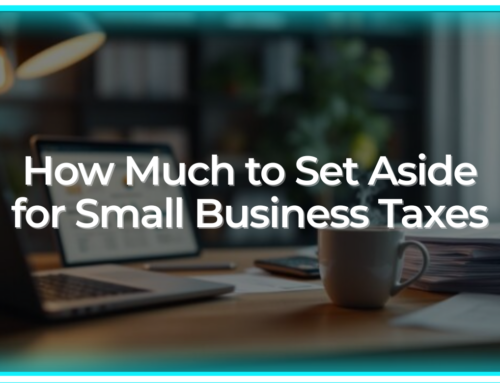Hey! I’m Bette Hochberger, CPA, CGMA. Filing and paying taxes for your small business may seem like an annoying task, but with the right information and organization, it can be a smooth process.
In today’s blog, I’ll walk you through the essential steps, from gathering your business records to understanding the tax forms based on your business structure.
Gather Your Business Records
Before diving into the tax filing process, make sure you have all the necessary records at your fingertips. This includes last year’s tax returns, your Employer Identification Number (EIN), Social Security Number (SSN), financial statements (balance sheet and income statement), and receipts for expenses.
Get Your Bookkeeping Up to Date
Keep your financial records organized and up to date. This will streamline the tax preparation process and help you maintain your financial health.
Understand Small Business Taxes
Know your tax rate based on your business structure. For C corporations, the tax rate is a flat 21%. For other structures, consult the tax tables to determine your tax bracket.
Set Aside Money to Pay Taxes
Consider saving for your taxes by setting aside 25-30% of your net business income. Establish a separate account to avoid dipping into these funds, and consider automatic transfers for consistent income or manual transfers for variable income.
Claim Your Small Business Tax Deductions
Take advantage of various tax deductions available to small business owners. Some categories include startup costs, raw materials, office supplies, rent, home office expenses, insurance, business travel, and salaries/benefits.
Keep Details Straight on Business Expenses
Maintain detailed records for every business expense, including amount, date, place of purchase, payment method, and the reason for the expense. This information is crucial in case of an audit.
How to File Small Business Taxes
Understand the filing process based on your business structure:
– Sole Proprietorship: File a Schedule C with your annual personal tax return.
– Partnership: File Form 1065 and provide each partner with a Schedule K-1.
– Limited Liability Corporation (LLC): Follow rules similar to a sole proprietorship or partnership, depending on the number of members.
– C Corporation: File a separate corporate tax return (Form 1120) and a personal tax return.
– S Corporation: Shareholders report profit/loss using Schedule K-1, and the corporation files Form 1120S.
Additional Considerations
– Nonprofit organizations have a different tax structure and may apply for exemption.
– Self-employed individuals pay self-employment taxes (Social Security and Medicare taxes).
– Sales tax, payroll taxes, and changes due to the Tax Cuts and Jobs Act should also be considered.
How to Pay Small Business Taxes
Most small businesses pay estimated taxes quarterly. Use form 1040-ES to submit payments, either by mail or online. Corporations should use the Electronic Federal Tax Payment System.
Changes Due to Tax Cuts and Jobs Act
Understand the key changes brought by the Tax Cuts and Jobs Act, including reducing the corporate tax rate, introducing the QBI deduction, and altering tax deductibility for client entertainment and office snacks/meals.
By following these steps and staying informed about your business structure’s specific requirements, you can confidently navigate the small business tax landscape.
Remember to seek professional advice for personalized guidance and ensure compliance with the latest tax regulations. Need help filing taxes? Schedule a meeting with me, and I’d be happy to help.
As always, stay safe, and I will see you next time.







